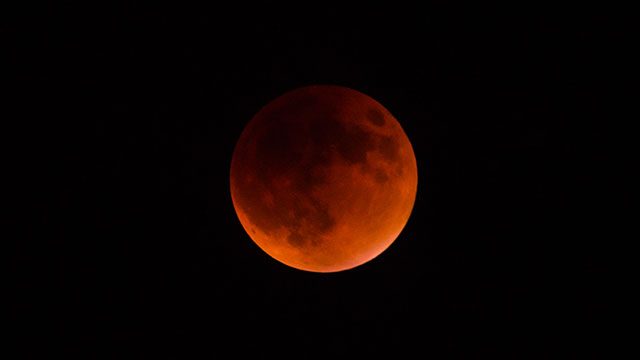SUMMARY
This is AI generated summarization, which may have errors. For context, always refer to the full article.

MANILA, Philippines – The Philippine Atmospheric, Geophysical and Astronomical Services Administration (PAGASA) recently announced that a total lunar eclipse will occur on July 28, and it will be visible in the Philippines.
PAGASA said in its monthly astronomy bulletin that the eclipse will start at 1:13 am Philippine Standard Time, and will end at 7:30 am on July 28. In Manila, the moon will rise at 6:05 pm on July 27, and will set at 5:44 am on July 28.
Here’s the timing of the phases of the eclipse, according to PAGASA:
- Penumbral eclipse begins: 1:13 am
- Partial eclipse begins: 2:24 am
- Greatest eclipse: 4:21 am
- Partial eclipse ends: 6:19 am (unobservable)
- Penumbral eclipse ends: 7:30 am (unobservable)
“Lunar eclipses are safe to watch and observers need not use any kind of protective filters for the eyes,” PAGASA said. “A pair of binoculars will help magnify the view and will make the red coloration of the moon brighter.”
The National Geographic reported that this total lunar eclipse is the longest of the century and will last one hour and 43 minutes.
NASA said a total lunar eclipse happens when the whole moon “enters Earth’s shadow.”
“Some sunlight still reaches the moon, but first it goes through Earth’s atmosphere. The atmosphere filters out most of the sun’s blue light, so the moon looks red,” it added.
PAGASA said the July 28 total lunar eclipse will also be visible in Antarctica, Australasia, Asia, Russia except its northern part, Africa, Europe, and east of South America. The last total lunar eclipse took place on January 31, with observers catching a glimpse of a super blue blood moon.
A partial solar eclipse will also occur on July 13, but it will not be visible in the Philippines. – Jee Y. Geronimo/Rappler.com
Lunar eclipse image via Shutterstock
Add a comment
How does this make you feel?
There are no comments yet. Add your comment to start the conversation.